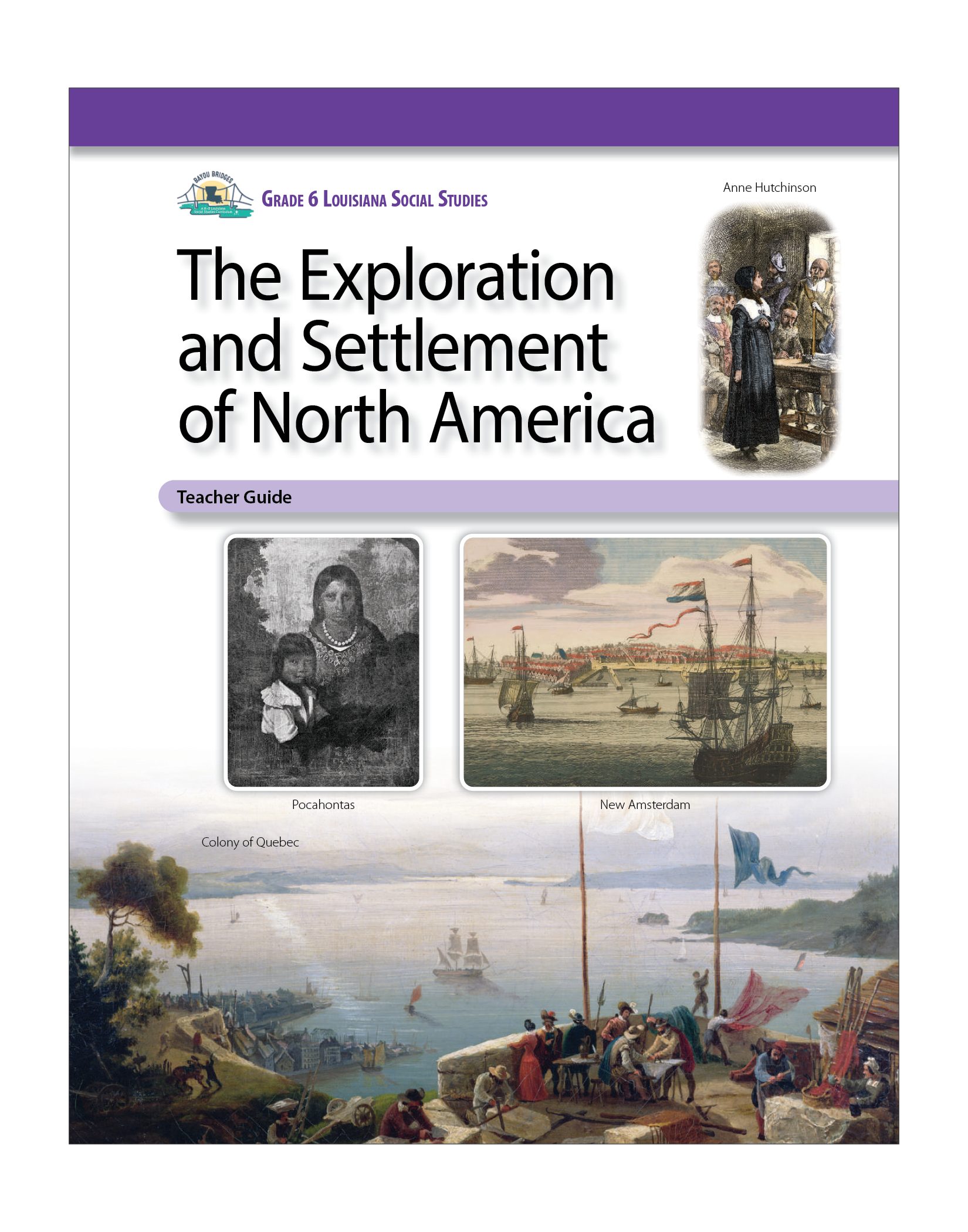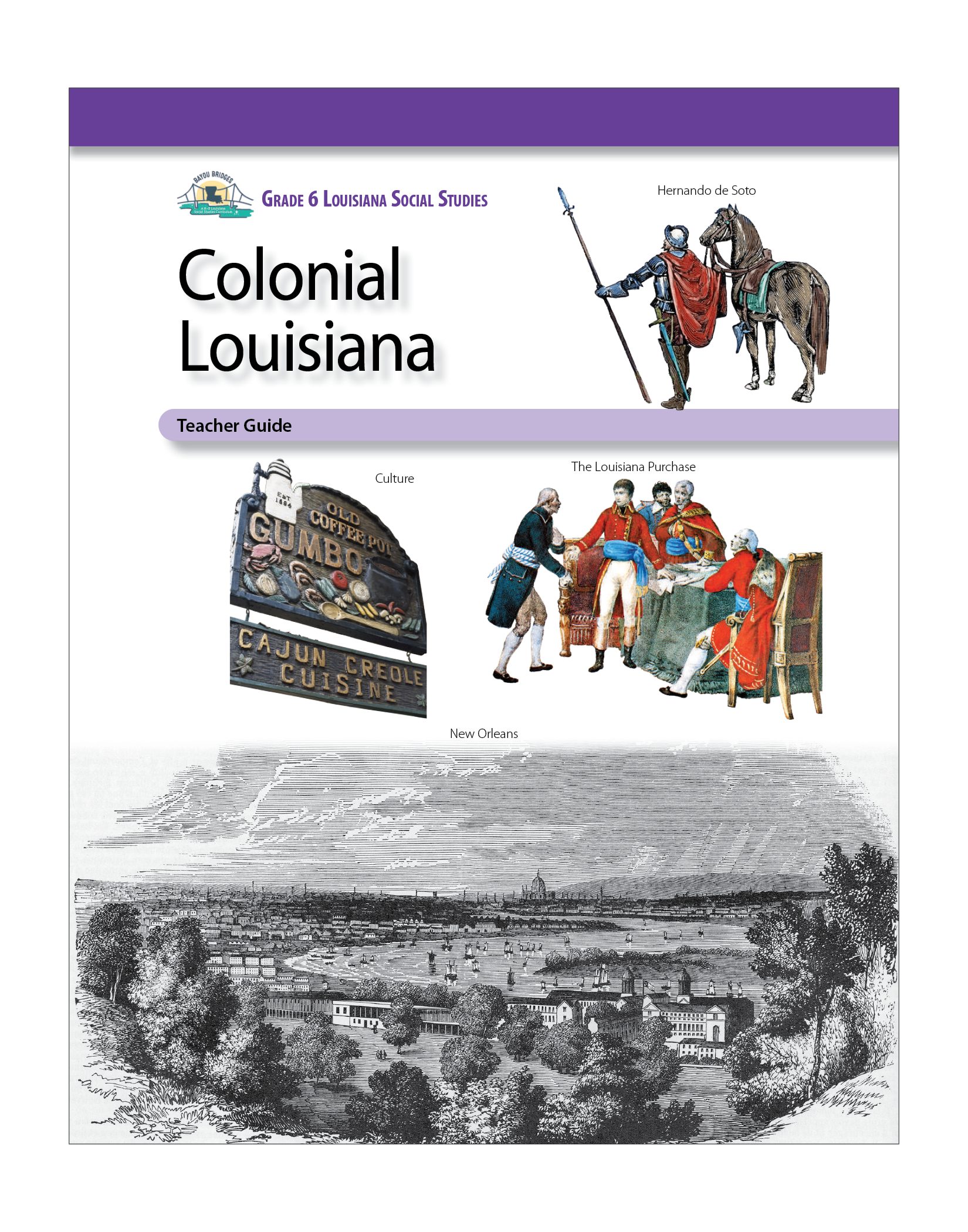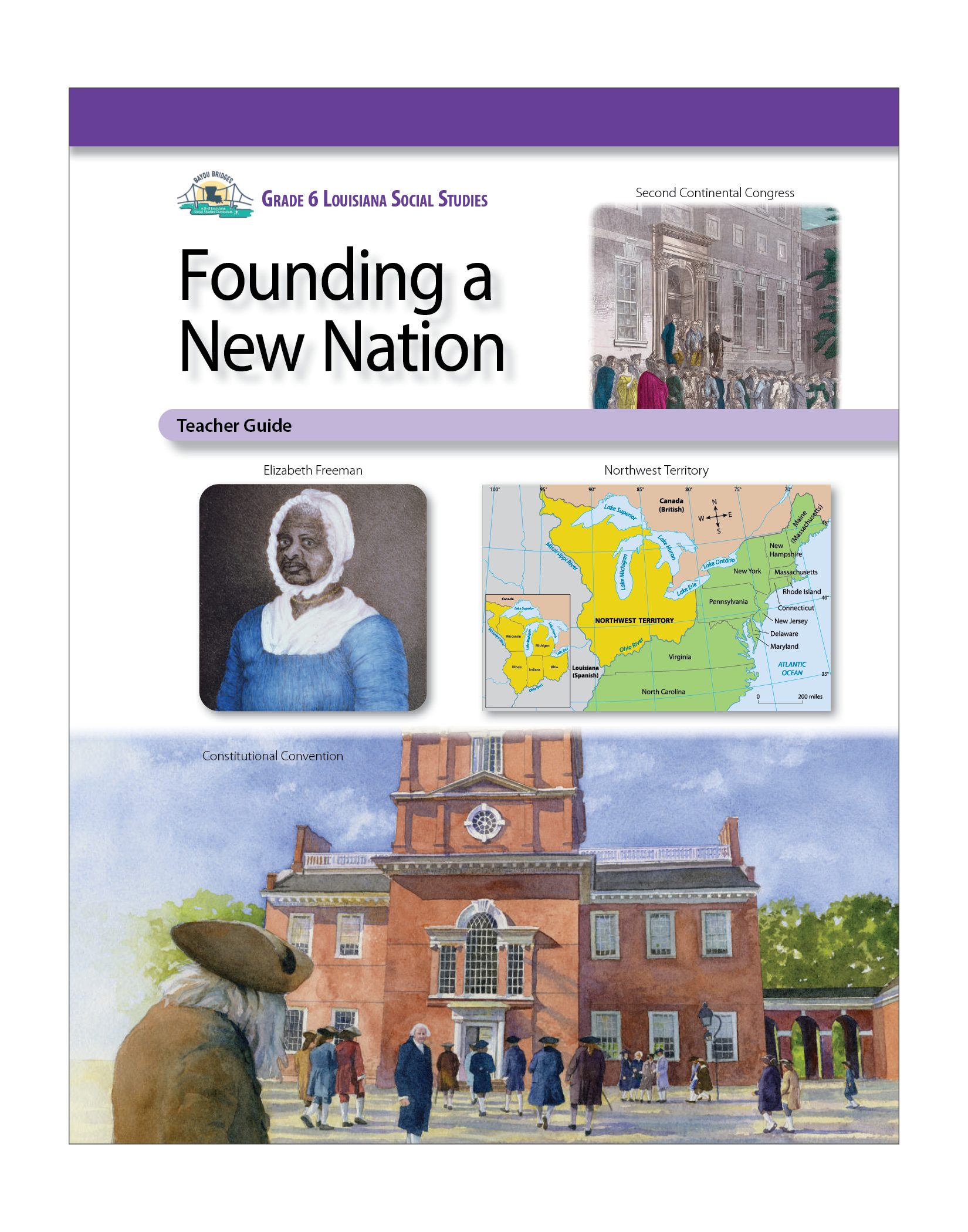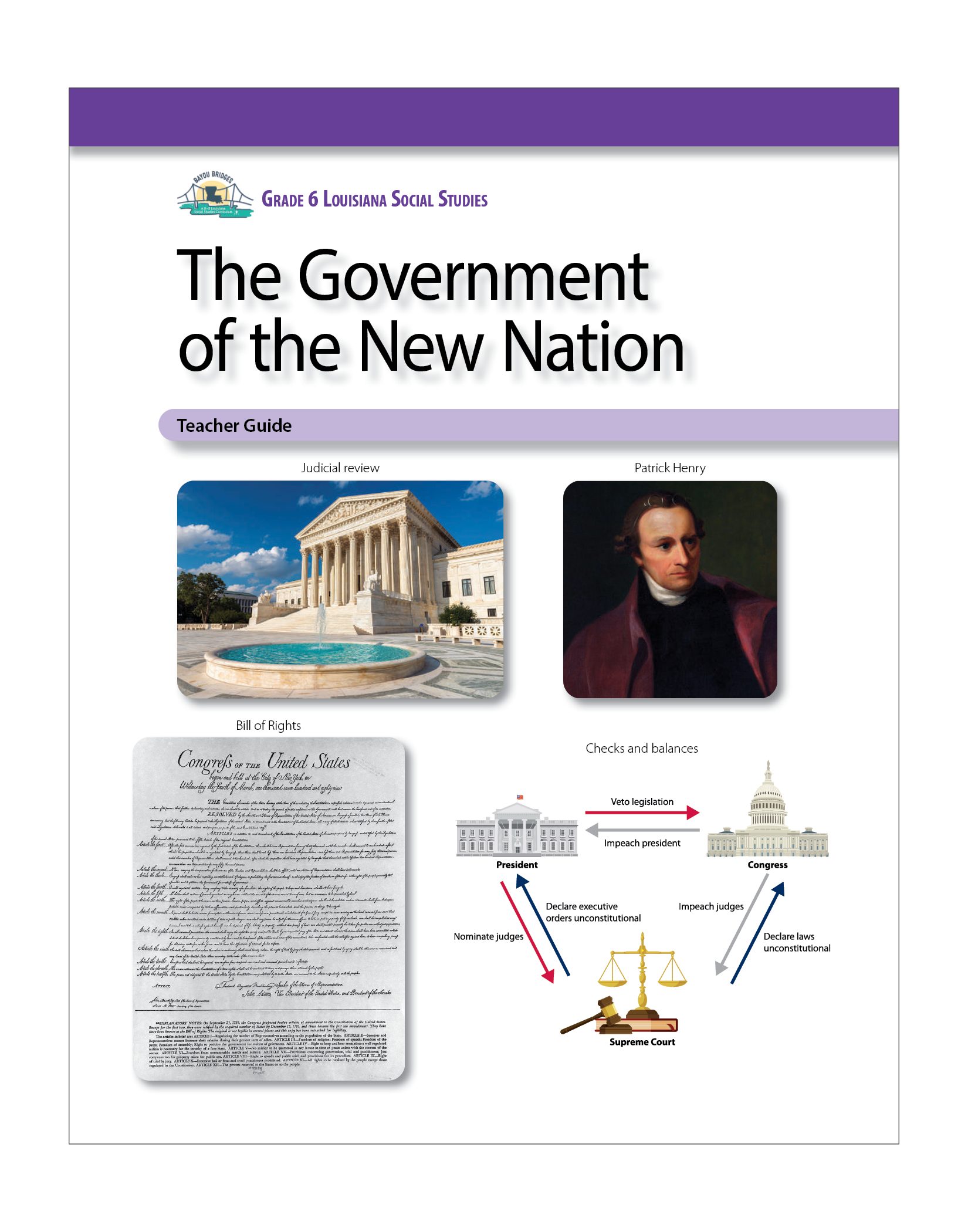
Louisiana Bayou Bridges Grade 6
Focus:
Grade 6 of the Louisiana Bayou Bridges Curriculum Series covers the beginnings of the United States, from European exploration of North America to the writing and ratification of the U.S. Constitution. Students will read about various European expeditions across North America and explore what life was like in the first European colonies on the eastern seaboard. They will learn about the growth of colonial America, its development into distinct regions, and the unique experience of Louisiana as a French and a Spanish colony. Students will engage with founding documents such as the Declaration of Independence, the U.S. Constitution, and the Federalist Papers as they investigate the colonies’ pursuit of independence and the new nation’s attempts to form a lasting and stable government.
Instruction Time: 45–55 minutes per class period
Each unit includes the following:
TEACHER GUIDE: Each Teacher Guide explains the program components and provides suggested pacing, detailed lesson plans, activity page masters, and chapter and unit assessments.
STUDENT READER: Each Student Reader is engagingly written and richly illustrated with maps and color images. Each volume includes primary sources, vocabulary call-outs, and a glossary.
ONLINE RESOURCES: The Online Resources for each unit provides links to background information for teachers, timeline card slide decks, resources to support guided reading, and additional activities, including artifact studies, primary source examinations, and virtual field trips.






